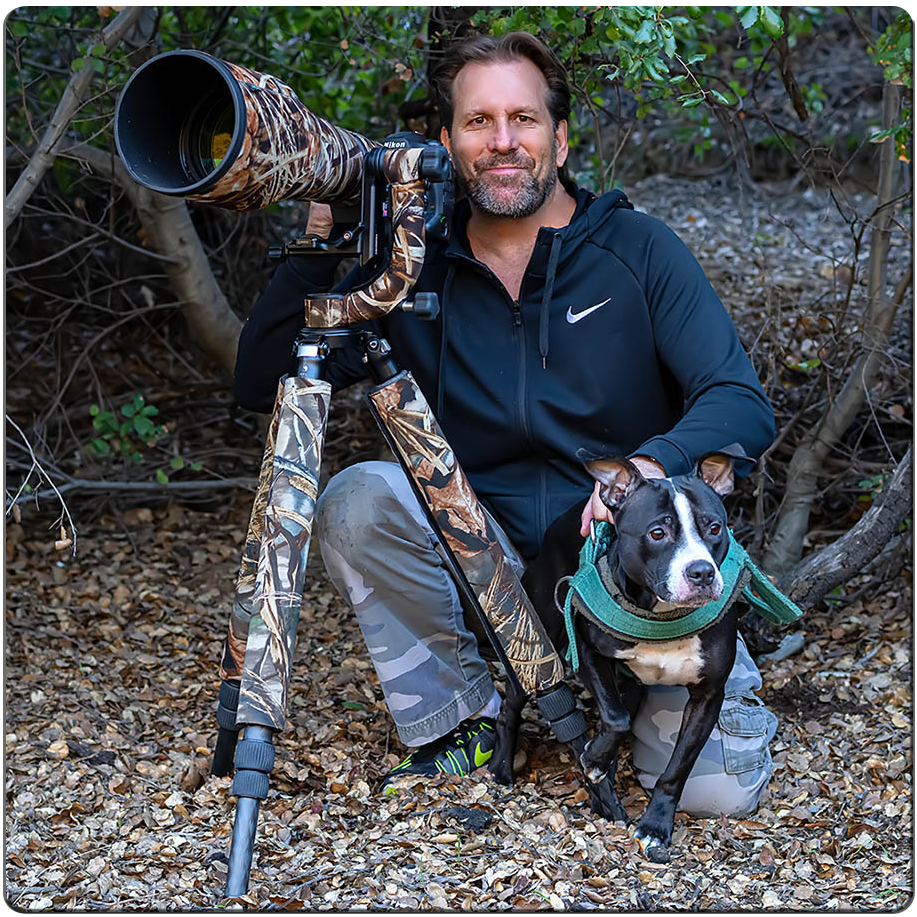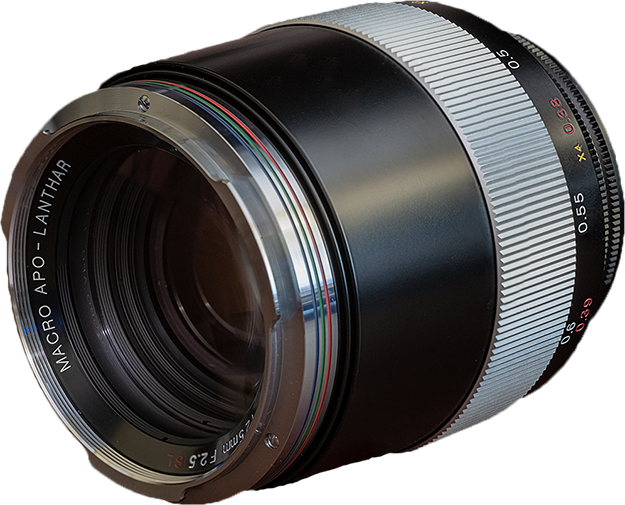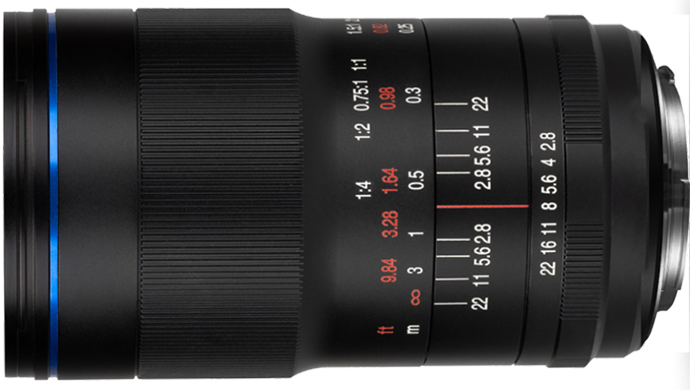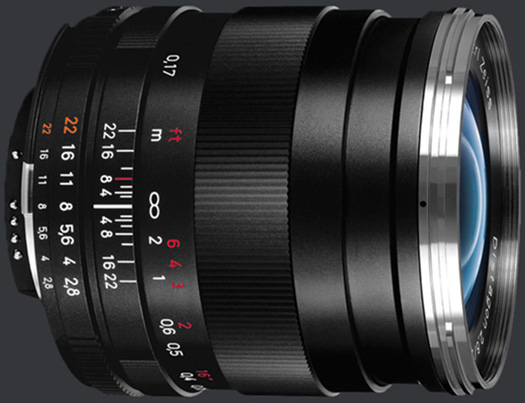Manual Focus Lenses
For detailed close-up work, including macro, using high-quality manual-focus (MF) lenses creates a more controlled and intimate photographic experience. MF lenses (almost without exception) offer superior build quality, greater focus throw (and therefore precision) than do any of today’s modern plasticky AF lenses.
As of this writing, Cosina-made lenses (Voigtländer / Zeiss), as well as Leica glass, are generally considered the finest MF optics available. For nature photography, from 1:4 to 1:2, the Zeiss 135 APO Sonnar, the Leica 100 APO, the Voigtländer 65 APO-Lanthar, and the little Zeiss 25 f/2.8 Distagon, remain real treasures in the field, respectively.
From 1:2 to 1:1, the Voigtländer 125 APO-Macro has been my “Standard macro” against which all others are measured. The Voigtländer 125 APO-Lanthar represents the perfect blend of über-sharpness, wide-open, accurate color-rendering, combined with beautiful, smooth color transitions. Few macros can compare, and only the Leica APO-Macro-Elmarit-R 100mm has been able to remain alongside it in my 1:1 kit, but I have to add the Elpro adapter to get there.
Meanwhile, the Chinese brand, Laowa, offers very capable macro options of their own, specializing in ways which make them truly unique. Their 100mm “CA-Dreamer” macro lens, for example, surpasses the typical “1:1 limit,” going up from 1:1 to 2:1 magnification, making it essentially peerless for arthropods. When its companion, the Laowa 25mm 2.5x to 5:1 “Ultra Macro,” is added, I get a stellar field combo from 1x to 5x.
Therefore, barring certain specialized applications, I now use Laowa products almost exclusively for dedicated arthropod explorations; while I use Cosina or Leica glass for fungi and flowers. Because of the quality and convenience of these Laowa lenses, I also no longer need to ‘reverse‘ my Zeiss wide-lenses anymore to achieve higher magnifications. That said, here is my MF lens lineup:
Voigtländer Macro APO-Lanthar 125mm f/2.5 SL
After using a multitude of macro lenses since 2007, this lens has become one of my true favorites. Few other lenses (of any make) carry with it the intimacy of experience that the Voigtländer APO-Macro brings to the table. It also has a certain perfection of delivery. By “intimacy of experience,” I mean the 630° of manual-focus throw, allows me a degree of precision rarely matched … and by “perfection of delivery” I mean that (optically) the Voigtländer APO-Macro provides the perfect union of über-sharpness, pleasing bokeh, while also delivering accurate color reproduction. In short, this incredible lens seems to get absolutely everything right. Because of its sharpness wide-open, the accuracy of its color detail, and the precision of its focus-throw, it is my first choice for conducting macro stacks in the field. It is a truly sublime optic, the full details of which I have described in this review.
Find on eBay: Voigtländer Macro APO-Lanthar 125mm f/2.5 SL
Leica APO-Macro-Elmarit-R 100mm f/2.8
This is the only macro lens I have been able to find that equals (and, in some ways, surpasses) the Voigtländer APO-Lanthar. Just about as sharp wide-open, with just as excellent CA control & rendering, the Leica APO-Macro-Elmarit has even better sharpness across the frame, as well as superior micro-contrast and detail preservation. There is also a depth to the color, a rendering that is hard to describe. Unfortunately, the Leica needs an attachment in order to get to 1:1. You can even combine the Elpro with the APO TC and get to 2:1. Finally, with 710° of focus-throw, it is also the most precise macro lens on the planet, surpassing the precision of even the Voigtländer. Each lens produces its own “look” to the images, therefore I will prefer one over the other, depending on what my goals are.
Find on eBay: Leica APO-Macro-Elmarit-R 100mm f/2.8
Laowa 100mm f/2.8 Ultra Macro 2x APO
After testing this lens against many high-end macros, I consider it to be the most useful macro lens for arthropods I have ever owned. My standards as to what lenses I find “acceptable” in image quality are also pretty high.
The Voigtländer and Leica APO macros remain my favorites for image quality, up to 1:1, and for flowers and such, but the truth is many—if not most—arthropods require greater than 1:1 magnification. Those few lenses that do go beyond 1:1 are invariably so specialized that you can’t shoot anything else (i.e., they have no infinity ∞ focus). Up ’til recently, I have had to reverse-mount short primes in order to go beyond 1:1 magnification.
Laowa changed all this, first by introducing their 60mm 2x a few years ago, which was a sharp, but crude offering, the images from which could not compete with Cosina’s or Leica’s best. Then Laowa introduced this 100mm “CA-Dreamer,” which is both incredibly-sharp as well as nicely-refined. This elegant optic has already received rave reviews from both LensTip and Optical Limits—producing stunning sharpness, with excellent CA-control—as well as smooth bokeh. The Laowa 2x APO is able to create images reminiscent of the finest lenses—and yet surpassing them by being capable of 2x magnification.
For the arthropod enthusiast who prefers the look of natural light, who wants greater magnification, and who yet also insists on “Zeiss-like” image quality, I cannot recommend this lens highly enough. No other ultra-macro lens compares. Unfortunately, the Laowa 100mm f/2.8 Ultra Macro only has 120° of focus-throw (to go from ∞ to 2:1 !) which makes precision stacks impossible. A macro-rail is needed.
See @ Venus Optics: Laowa 100mm f/2.8 UltraMacro 2x APO
Laowa 25mm f/2.8 2.5-5x Ultra Macro
This lens is what I now use for high-mag macro. It is yet another unique lens introduced by Venus Optics, eliminating the need for reversing lenses. While this specialty lens is not an all-around macro [having no infinity (∞) focus], it is simply the most versatile high-mag macro lens option I’ve tried. While I now mostly use the Laowa 100mm “CA-Dreamer” 2x UltraMacro, in the field (as I seldom go beyond 2x); however, when I do, the compact size + razor-sharp images this little lens delivers make it an invaluable tool and an easy “add” to the camera bag. (Or even my pocket!) At a cost of only $399, it is also the least expensive lens I own, of any kind, and yet it is sharper than all my shorter Zeiss lenses (when reversed). It also easily out-performs Canon’s legendary $1000 MPE-65mm lens, at a fraction of both the size and the cost. While the little Laowa 25mm is not as well-corrected for CA as its big brother, the 100mm APO, this generally has little relevance. The lens is a “must have” for anyone seriously into high-mag macro, although the tripod collar is a non-functional joke. Another negative is it is impossible to see using the dark OVF of a DSLR, @ f/11 – f/16, when trying to perform single-image work with a flash. Visibility is far better with my mirrorless Z7 (and illuminated EVF) than it was on my D850 w/ OVF, where, again, it was basically impossible to see.
See @ Venus Optics: Laowa 25mm f/2.8 2.5-5x Ultra Macro
Zeiss 25mm f/2.8 Distagon T* ZF.2
There are two “Classic Zeiss Distagon T* 25mm lenses”: the f/2.8 and the f/2.0. Almost every “lens rating site” will discredit the f/2.8 version (above) and laud the f/2.0 … for the simple reason the f/2 has better “corner sharpness.” What the review sites don’t tell you is, while the f/2.8 version may be weaker in the corners, it is just as good in the center.
More importantly, the 2.8 version has a ~1:2 reproduction ratio (compared to a 1:6 reproduction ratio in the f/2), as well as a 6.69″ (17 cm) minimum focusing distance (compared to a 9.84″ MFD in the f/2). Finally, the 2.8 version has 330° of focus throw, for precision-manual focus, compared to a short 120° of focus throw in the f/2. In short, the f/2.8 version, above, is designed for close-up work, the other for landscape.
As a multi-dimensional wildlife shooter, the Zeiss 25 f/2.8 offers me an 80° angle of view as well as .43x magnification, giving me close-perspectives of flowers/insects, etc., yet also providing the context of the background environment, for unique effect. In fact, the field curvature + corner softness actually enhance the overall presentation of the image, in a pleasing way, making this Zeiss a lightweight, yet valuable companion in the field.
This lens can also be reversed to achieve 2.7x magnification as a super-macro lens.
Find on eBay: Zeiss 25mm f/2.8 Distagon T* ZF.2
Laowa 15mm f/4 Ultra Wide Macro
The Laowa 15mm f/4 is the widest macro lens ever developed. While it is capable of taking decent landscapes, its real uniqueness comes from its ability to approach a subject from a mere 4.8″ (12.2 cm) away, and yet to simultaneously project a 1:1 reproduction ratio onto the sensor. This creates a similar (and even more dramatic) effect as the Zeiss 25mm, above, taking macro photography to a new place. By having such a wide angle of view (110°), and by offering genuine life-size magnification, this lens is able to create “the full picture” of both arthropod and background, like no other. A valuable tool, both artistically and scientifically, I have known about this lens for years, and recently purchased it when Venus Optics upgraded the casing to match its more refined offerings. I am eager to start experimenting with it.
See @ Laowa: Laowa 15mm f/4 Ultra-Wide Macro








